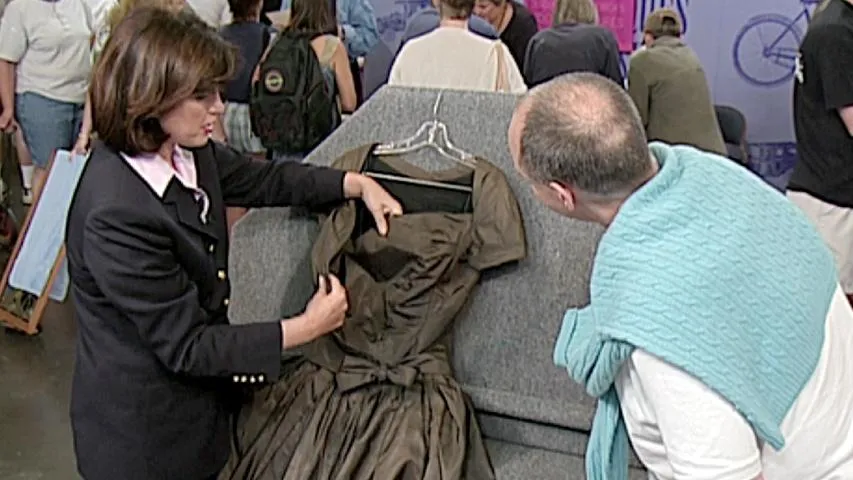APPRAISER: George, you brought this curio cabinet.
GUEST: My grandmother received it as a debt back in the 1920s. She did childcare in San Francisco.
APPRAISER: Okay.
GUEST: And they couldn't pay her, so she got the cabinet.
APPRAISER: As payment, well, it was pretty good payment. Around 1920, this would have been 50 years old. And what you brought is something really in the Japanese style, actually made in Japan for the Western market. The story it tells is that in the late 19th century, there was this huge interest, in America, in Japanese things, all things Japanese. What they liked about it is what this piece expresses, and if you love wood, how can you not love this? It's almost like a patchwork quilt, and I love the asymmetry of these different woods, the grain and the light and dark contrast with each other. It's typical Japanese late 19th century aesthetic. Old graphics, you see these contrasting graphics. We come down here, look at this. I mean, I love this, it's almost like a lightning bolt, and then this is like a soft wave in the ocean. So you see it's not symmetrical when you split it down the middle. This asymmetry actually comes from Chinese furniture from the 18th century, but by the late 19th century, the Japanese took that asymmetrical idea, and knowing also that the Western market loved it made lots of furniture for the Western market. And after 1854, when Commodore Perry opened up trade between the West and Japan, it exploded, the shipment of things west over to America. So I'm so excited that you brought this. It's one of the nicestthat I've seen and that our Asian specialists here on the show have seen. It would be in the neighborhood of upwards of about $8,000, $7,500 or $8,000.
GUEST: That's good, that's good.
APPRAISER: Is that good?
GUEST: That's very good, yes.
APPRAISER: Are you going to be nicer to it?
GUEST: I will be nice to an old friend.
APPRAISER: You've been pretty nice.
GUEST: It's been with me for all my life, so I'm thrilled.
APPRAISER: You're gonna cherish it.











